- Home
- Carl Sagan
Comet Page 2
Comet Read online
Page 2
On more solid ground, the low gravity might tempt you into unprecedented athletic feats. But you must be careful. If you so much as stride purposefully, you walk off the comet altogether. With only a little effort, from a standing position you leap thirty kilometers into space, taking almost a week to reach the peak of your trajectory. There, gently tumbling, you have a comprehensive view of the comet slowly rotating beneath you, its axis by accident almost pointing toward the Sun. You can make out its lumpy shape; the comet is far from a perfect sphere. Perhaps you worry that you have jumped too high, that you will not fall back to the comet, that you will drift alone through space forever. But no, you see that your outbound velocity is gradually diminishing, and eventually, ten or twelve days after making this modest exertion, you tumble lightly back onto the somber snows. On this world you are dangerously strong.
Since it is hard to take a step without launching yourself on a small parabolic trajectory, team sports would be played in agonizing slow motion, the cluster of players rising and spinning in the space surrounding the comet like a swarm of gnats sizing up a grapefruit. A game of baseball would take years to complete—which is just as well, since you have a million years or so to idle away. But the ground rules would be unorthodox.
You pack the snow into an odd dark snowball and easily fling it off the comet, never to return again. With a flick of the wrist, without even engaging your arm in the throwing motion, you have launched a new comet on its own long, falling trajectory into the inner solar system. High above the equator of your comet, you can lightly pitch a snowball so that it hovers forever above the same point on the surface. You can make arrays of objects stationary in space, vast, apparently motionless three-dimensional assemblages, poised above the cometary surface.
As the millennia pass, you cannot help but notice that the yellow star is gradually growing more intense, until it has become by far the brightest star in the sky. The early phase of your voyage has been tedious, even if you are endowed with heroic patience, and in several million years hardly anything has happened. But you can at least see your surroundings more clearly now. The icy ground beneath you has hardly changed at all. The journey has been so long that you have been able to detect variations in the positions and, you think, even the brightness of many nearby stars. Your world is moving faster now, but otherwise everything is still, silent, cold, dark, changeless.
The comet eventually begins crossing the orbits of other kinds of objects, much larger bodies that are also bound in gravitational thrall to that beckoning point of light. As you pass close by them, you careen perceptibly. Their gravities are so large that they retain massive atmospheres. Your comet, by contrast, is so insubstantial that any puff of gas released escapes almost instantly to space. Accompanying the giant gas planets with their multicolored clouds is a retinue of smaller, airless worlds, some of them made of ice—much more kin to the comets than the huge ball of hydrogen that fills your sky.
You can feel the warmth of the Sun increasing. The comet feels it too. Little patches of snow are becoming agitated, frothy, unstable. Grains of dust are being levitated over the patches. Considering the feeble gravity, it is no surprise that even gentle puffs of gas send grains of ice and dust swirling skyward. A powerful jet gushes up from the ground and a fountain of fine particles is launched far above you. The ice crystals sparkle prettily in the sunlight. After a while the ground becomes covered with a light snow. As you plunge onward, closer to the Sun, its disk now easily visible, such blowoffs become more frequent. While on one of your excursions aloft, you chance to see an active jet, a geyser pouring out of the ground. You give it wide berth. But it reminds you of the instability—the literal volatility—of this tiny world.
Far out in space, the vanguards and outriders of the columns of crystals are being blown back by some invisible influence. Eventually the cometary nucleus on which you have been riding is enveloped in a cloud of dust particles, ice crystals, and gas, and the material being blown back behind you slowly forms an immense but graceful tail. If you stand on solid ground, far from the kinds of unstable ices that produce the geysers, you can still see a fairly clear sky, and track your motion by the stars. When the big jets go off, you can feel the ground shift. Here and there the ice has sheared or cracked or fallen, revealing intricately stratified layers of various colors and darkness—a historical record of the building of the comet from interstellar debris billions of years ago. By looking at the stars, you can tell that your worldlet is darting a little, rebounding in the opposite direction every time a new gusher erupts. The fountains of fine particles cast diffuse shadows on the ground, and there are now a sufficient number of them—most still of modest dimensions—that the field of darkish ice has taken on a mottled, dappled appearance.
The fine, icy grains evaporate in a few moments when heated by the increasingly fearsome sunlight, and only the dark grains that they contain will persist as solids. The substance of the comet is being converted into gas before your eyes. And the gas, illuminated by sunlight, is glowing eerily. You realize that there is now not just one tail, but several. There are straight blue tails of gas, and curving yellow tails of dust. No matter in what direction the jet happens to gush at the beginning, the unseen hand carries it away from the Sun. As the jets turn on and off, and the streamers above you curve because of the rotation of the comet, a rococo skywriting takes form. But everything aloft is relentlessly redirected by the invisible forces, the pressure of light and the wind from the Sun. The solar wind seems intermittent. So the gradually burgeoning tails form, merge, separate, and dissipate, and knots of higher brightness abruptly accelerate and then decelerate leeward from the Sun. And windward, sheets of gas and fine particles form complex and exquisite veils that change their aspect in the twinkling of an eye. This is a kind of polar fairyland, and its beauty momentarily distracts you from how dangerous it has become.
Because of the evaporation of so much ice, the ground near the exhausted gushers is friable, delicate, fragile, often no more than a matrix of fine particles stuck together billions of years ago. Soon hills of snow that had stolidly resisted the importuning sunlight for eons show signs of stirring. There is an internal motion. The ground buckles. Tentative puffs of gas are released to space, then many geysers simultaneously erupt, and you know that nowhere on the entire surface of this cometary nucleus is there a safe refuge. The comet has awakened from a trance of eons into a wild and manic frenzy.
Later, after you pass the Sun and retreat into the interstellar night, the comet will lose its tail, and settle down. Its orbit will one day carry it back again to the inner solar system. Perhaps in some future pass by the Sun, millions of years hence, the surface will be safer because all the outer layers of ice will already have been vaporized by the heat. Only dusty and rocky stuff will be left. After many passages, a comet becomes less active, produces fewer jets, generates a less spectacular tail. As they get older, they settle down. But you are aboard a new comet, and swirling geysers are spraying the skies with dust. Maiden voyages are always the most dangerous.
You are venturing still closer to the Sun, and although the sky above you is overcast, the temperature is rising. But the surrounding haze of fine, bright particles that diffuses the sunlight also reflects it back to space, and evaporating the ice uses energy that otherwise would go into heat. If not for this protection the cometary nucleus and you yourself might become dangerously hot.
You are rounding the Sun now, racing, hurtling through this treacherous regime. You have never moved this fast before. The ground is creaking and straining, new fountains are violently erupting. You take refuge at the shadowed base of a hillock of ice whose sunward side is crumbling, evaporating, and shooting pieces of itself out into space. But eventually the activity subsides, and the skies partially clear. Formerly the Sun was ahead of you; now it is behind, on the other side of the cometary nucleus.
Through a break in the surrounding nebulosity you realize that you are passing close to a smal
l, blue world with white clouds and a single battered moon. It is the Earth in an unknown epoch. There may be beings there who will look up and see this apparition in their skies, who will note the great blue and yellow tails streaming away from the Sun, the complex pinwheel-shaped patterns of fine-grained material being jetted off into space, and they will wonder what it means. Some of them might even wonder what it is.
It is surprising how closely you are passing, and it occurs to you that sooner or later some comet is going to run smack into this little planet. The Earth would survive such an impact, of course—although there would doubtless be minor attendant changes, some species of life having failed, perhaps, and others newly promoted. But the comet would not survive. It would fall deeper and deeper into that atmosphere, large fragments, whole hills of the nucleus separating off, flames licking through the crevices into its hidden interior. Perhaps enough of the comet would survive to make a huge explosion, generating a large hole in the ground down there, and spraying up a cloud of surface dust. But of the comet itself, all the ices would have vaporized. All that would be left would be a sprinkling of fine, dark grains scattered like birdseed or buckshot upon the alien land.
But, you reassure yourself, running into a world is an unlikely event. On this swing past the Sun, at any rate, you will not collide with anything larger than occasional motes of interplanetary dust, the remnants of past comets that have spent their substance dashing through the realm of fire. With a last glance at the blue world, you silently wish its inhabitants well. Perhaps they will consider their skies comparatively drab and cheerless once your comet has departed. For yourself, you are relieved to be on the return trajectory, out of the deadly heat and light, and heading back to the placid cold and dark, where, except for an occasional unlucky jostling by a passing star or dust cloud, comets can live forever.
The long and lovely tails now precede you on your journey; the wind from the Sun is at your back.
CHAPTER 2
Portent
If at your coming princes disappear,
Comets! come every day—and stay a year.
—SAMUEL JOHNSON, LETTER TO MRS. THRALE, OCTOBER 6, 1783
This one description ought to be generally agreed upon: [A comet is] an unusual star of strange appearance … seen trailing fire which streams around it.
—SENECA, NATURAL QUESTIONS, BOOK 7, “COMETS”
For a million years or more, there have been human observers to wonder at the grandeur of the comets that intermittently grace the skies of Earth. Memorable comets visible to the naked eye have appeared on average once a decade, a few times a lifetime. On a hundred thousand occasions during the tenure of humans on Earth our ancestors must have seen a diffuse streak of light, brightening night after night, sometimes outshining even the brightest stars, and then, weeks or months later, slowly fading from view. A hundred thousand apparitions. And yet we have not a single concrete recollection of any comet earlier than the last three or four millennia. In this sense, as in many others, we are a species of amnesiacs. We are estranged from our past. We can only guess what our ancestors thought when the habitual serenity of the heavens was so spectacularly interrupted.
For most of that time humans enjoyed a far more intimate relationship with the sky than we do now. We may know much more than they did about what is actually up there, but they were much more a part of it. They slept among the stars. They looked to the sky to tell them when to camp and when to move on, when to expect the migratory game and the rains and the bitter cold. Appropriately, they watched the sky as if their lives depended on it, but also because it was a puzzle whose complex beauty moved them. They invested the heavens with hypotheses, explanations, and metaphors that we call myth. The apparition of a bright comet is a recurring occasion for marvel and speculation, and thus the comets prodded us along, a little at least, as we were finding our way, along the road to consciousness.
Comets were a kind of psychological projective test—something wholly unfamiliar that you must describe in ordinary language. The Tshi people of Zaire call comets “hair stars,” and the word comet—the same in many modern languages—comes from the Greek word for hair. A comet suggests flowing tresses. To the Chinese, comets were “broom stars,” and much else. In other cultures, they are “tail stars” or “stars with long feathers.” Scientists today still describe comets as having “tails.” To the Tonga, comets are “stars of dust,” which is much closer to the truth. The Aztecs saw them as “smoking stars.” Among the Bantu-Kavirondo, all cometary apparitions are returns of one and the same comet: “There is but one comet, Awori, the feared one, with his pipe.”
It was hard not to take the comets personally. Nearly everybody did. This tendency to construe each apparition as a telegram to the locals from the gods permeates virtually every cometary record until the sixteenth century. Rarely have so many diverse cultures, all over the planet, agreed so well. In the history of the world, more societies have advocated incest or infanticide than have taught that comets were benign, or even neutral. Everywhere on Earth, with only a few exceptions, comets were harbingers of unwanted change, ill fortune, evil. It was common knowledge.
In their myths, the tribal peoples of Africa may have preserved something of our original perceptions of comets. To the Masai of East Africa, a comet meant famine; to the Zulu of South Africa, war; to the Eghap of Nigeria, pestilence; to the Djaga of Zaire, specifically small-pox; and to their neighbors, the Luba, the death of a leader. The !Kung of the Upper Omuramba in what is now Namibia were alone in their optimism. They saw the comet as a guarantee of good times ahead. This is such an unusually cheerful interpretation that you might well ask who the !Kung are. (The ! stands for a click you make by touching your tongue to the roof of your mouth at the same instant you say the K. It takes some practice.) They are hunter-gatherers, with a rich culture that is closer to the long-term human norm than almost any other culture today. So you might wonder whether the !Kung knew something about nature—or themselves—that the rest of us have forgotten.
There is an overwhelming sadness to the literature on comets. With melancholy consistency we discover that disaster has always been a commonplace; that any comet at any time viewed from anywhere on Earth is assured of some tragedy for which it can be held accountable. This connection of comets and misfortune is made in the earliest surviving reference to a comet,* a single Chinese sentence from the fifteenth century B.C.:
When Chieh executed his faithful counselors, a comet appeared.
These words, associating official perfidy and murder with the early stirrings of astronomy, were written two centuries before the birth of Moses. Three hundred years later, another writer noted,
When King Wu-wang waged a punitive war against King Chou, a comet appeared with its tail pointing toward the people of Yin.
The Yinnites were in trouble.
If there was unanimity that comets caused disasters, there was disagreement as to what to do once you saw one. In Master Tso Ch’iu Miu’s Enlargement of the Spring and Autumn Annals, written between 400 and 250 B.C., there is an entry entitled, “Yen Tsu Argues Against the Use of Prayer in Averting Disaster from Comets”:
In the year [516 B.C.] a comet appeared in the kingdom of Ch’i. The king of Ch’i wished to send his ministers to pray to heaven. Yen Tsu dissuaded the king, saying, “It’s useless. You’re only fooling yourself. Whether heaven will give you a disaster or good fortune is set; it won’t change. How can you expect prayer to change anything? A comet is like a broom: It signals the sweeping away of evil.* If you have not done anything evil, why do you need to pray? If you have done something evil, praying won’t avert disaster. The work of the Ministers of Prayer won’t change fate.”
The king was delighted to hear this, and ordered the praying stopped.†
A survey of the early history of cometary observation gives the impression that for almost a thousand years everybody except the Chinese went to bed early. The Chinese logged at least 338 separate appari
tions from roughly 1400 B.C. to 100. Since 240 B.C. they have missed a return of Halley’s Comet only once, in 164 B.C. Their neighbors, the Koreans and the Japanese, made valuable but far less frequent observations. In the West, nothing approaching systematic observation of comets was in evidence until the fifteenth century.
In the 1970s, an excavation of the “Number Three Tomb” at Mawangdui, near Changsha, revealed the most impressive example of Chinese priority in this field—an illustrated textbook of cometary forms, painted on silk. Part of a larger work concerning clouds, mirages, halos, and rainbows, it was compiled around 300 B.C. Twenty-nine comets are displayed, classified by their appearance and by the particular brand of mayhem each foretells. Eighteen of the thirty-five different names known in Chinese for comets are given here. The four-tailed comet signifies “disease in the world,” the three-tailed one, “calamity in the state.” A comet with two tails that curve to the right promises a “small war,” although at least “the corn will be plentiful.”
How long would it take to assemble a catalogue of 29 distinct cometary forms? With 338 separate sightings recorded over 3,000 years in the surviving Chinese annals, the average discovery rate is about one bright naked-eye comet a decade—not too far from current values. If each of the 29 forms appears equally often, you would have to wait 29 × 10 = 290 years to see them all. But some cometary forms are much rarer than others. Thus, if every form depicted corresponds to a different comet, the Mawangdui atlas must have drawn on an earlier continuous tradition of systematic observation which precedes it by many centuries, possibly millennia. Accordingly, this splendid tradition of recording cometary forms must date back to 1500 B.C. or earlier. The earliest written and the earliest graphic representations of comets thus trace back to, or at least through, the same epoch. Perhaps there was an out-of-the-ordinary comet then that commanded their attention.

 Cosmos
Cosmos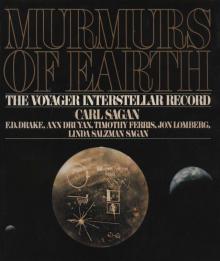 Murmurs of Earth
Murmurs of Earth Broca's Brain
Broca's Brain Comet
Comet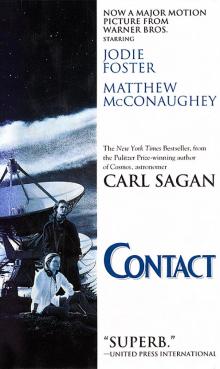 Contact
Contact Dragons of Eden
Dragons of Eden Cosmic Connection
Cosmic Connection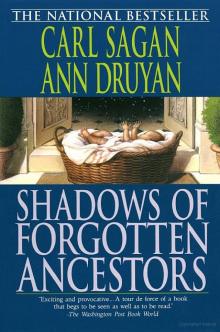 Shadows of Forgotten Ancestors
Shadows of Forgotten Ancestors Billions & Billions
Billions & Billions Comet, Revised
Comet, Revised Broca's Brain: The Romance of Science
Broca's Brain: The Romance of Science The Varieties of Scientific Experience: A Personal View of the Search for God
The Varieties of Scientific Experience: A Personal View of the Search for God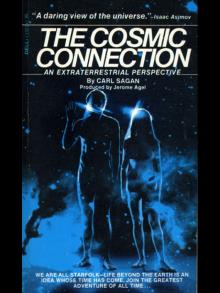 The Cosmic Connection
The Cosmic Connection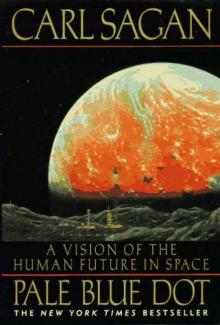 Pale Blue Dot: A Vision of the Human Future in Space
Pale Blue Dot: A Vision of the Human Future in Space The Dragons of Eden
The Dragons of Eden